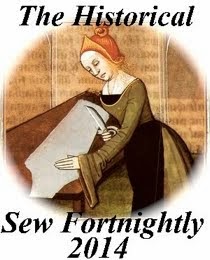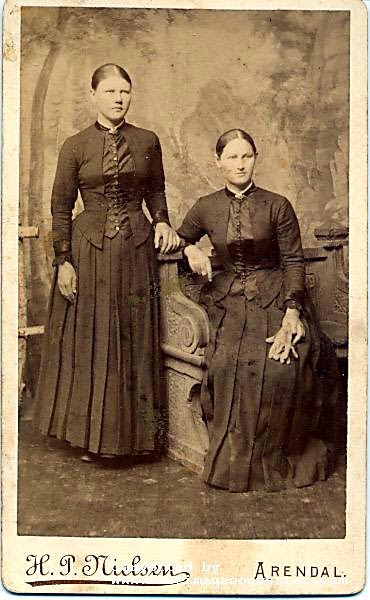 |
| giving tours at work, with a visiting "Chinese clay soldier". |
Clothing the Californio, 1769 to 1848
 |
| Alta California territory. Image: Wikimedia Commons. |
The modern state of
California, called Alta California almost 250 years ago, was the last part of
the Spanish empire to be settled; as the New World frontier, it was far away
from most of the cultural and political movements that were current in Spain,
and the rest of the Spanish Empire (settled over 200 years earlier). This distance affected everything in
California, from the architecture, economy, agriculture and other trades, to the
traje, or dress. The Spanish
citizens who settled this remote land, called Californios, were working-class
people, most of mixed race, who came to spend their lives settling the
wilderness. Many were soldiers in the army, who were paid, not so much in money
(the government didn't want to encourage their gambling habits), as in supplies
and the promise of a land grant after 10 years of service. The Mexican viceroy, on behalf of the King,
Carlos III of Spain, funded the whole scheme in order to provide supply ports
for the Manila galleons returning from Asia, and a buffer zone of Spanish
settlements, between the English, French, and Russian ships in the Pacific
Ocean and the rich silver mines in what is now northern Mexico. The viceroy's goal was to get the most
service out of the people and the land at the least expense, so California was
never well-supplied by the government in Mexico City, as the letters of the
misson padres, the presidio commanders, the local alcaldes (magistrates)
and the Governor in Monterey attest.
 |
| view of San Jose del Cabo, Baja California. By Father Ignacio Tirsch, 1762. |
California remained a
relatively poor and isolated land until 1824, with one or two Spanish galleons
arriving approximately once a year with supplies and news from Mexico City for
the Governor in Monterey, the padres at the Missions, and the officers at the
presidios. Other residents could order
things from Spain, if they could pay the high taxes and prices, but many ships
were wrecked sailing around South America, and many shipments never arrived.
All shipments stopped completely after 1810 because of the Mexican War for
Independence: all Spanish supply and trade vessels were commandeered for the
war effort and not permitted to sail to California, and Spain hadn't extended
free trade yet. Trade and supplies
didn't resume shipment to California until the new Mexican Governor arrived
with the astonishing news that California was no longer under Spanish
rule.  |
| Mule driver and his wife delivering cloth to a mission in California. By Father Ignacio Tirsch, ca. 1767. |
As a result, without a
body of wealthy citizens to commision portraits of themselves and their neighbors,
there are only a few images of the people who lived in California before 1824;
most are sketches done by a traveling priest, Father Ignacio Tirsch, and all
show people who lived in Southern California and the Baja California
peninsula. There are no known garments
remaining from California during that time period that can be studied, so in
re-creating a Californio costume from the Spanish period, quite a bit of
extrapolation is necessary. To find out
what was worn, the costume historian can start with the documents; general
clothing information can be found in the records kept by the mission padres,
the presidio officers, and the governor. These lists were created when settlement groups
left for California (and received supplies for the trip), when they arrived
(and settlement supplies were doled out to everyone), and again whenever more
government supplies arrived. It can be
assumed that the people would have made their clothes according to the pattern
used by the lower and middle classes of northern Mexico.
 |
| Governor of California, his wife and a soldier of California. By Father Ignacio Tirsch, ca. 1775. |
One record (from Baja
California) in 1725 indicates that the following items were purchased and
rebozos, and shoes; cotton, linen, and wool cloth; also, Flanders
lace, fine silk, Chinese brocade, ribbons, fancy patterned banding materials,
silk and cotton thread, silk knitting yarn, combs, gold wire loop earrings,
pearl beads, and coral (for beads). The
silks and lace would have been used by the regional Governor and his family,
and perhaps the highest-ranking officials at the presidios, but likely not by
the rest of the settlers and soldiers and their families.
provided for the presidio and pueblo settlers in that area: men's linen shirts, cotton hose, silk hose, and hats; women's
underpetticoats, long silk stockings, short silk stockings, short cotton
stockings,  |
| California soldier and his daughter. By Father Ignacio Tirsch, ca. 1775. |
The first settlement party
to present-day (Alta) California, led by Juan Bautista de Anza, traveled
between 1775 and 1776, and Captain Anza and the priest Father Pedro Font kept
journals of the trip, including a few clothing details. Anza's supply list included these items:
"Wardrobe for a Man" – 3 shirts of good Silesian linen, 3 pairs of
underdrawers of Puebla cloth, 2 cloth coats with lining and trimmings, 2 pairs
of trousers with lining and trimmings, 2 pairs of stockings, 2 pairs of
chamois-skin boots, 3 pairs of gaiter shoes, 1 cloth cape lined with thick
flannel, 1 hat, 1 ribbon for the hat and hair. "Wardrobe for a Woman"
– 3 shirts, 3 pairs of white Puebla petticoats, 2 pairs of petticoats (silk
serge and thick flannel) and an underskirt, linen cloth for jackets, 2 pairs of
Brussels stockings, 2 pairs of hose, 2 pairs of shoes, 2 shawls, 1 hat, 6 varas
of ribbon. Children's clothing supplies included Puebla cloth for linings,
petticoats, and white trousers, thick flannel for "little
petticoats", linen for shirts, other un-identified cloth, hats, shoes,
shawls, and ribbon for bands. Puebla
cloth was probably a tightly-woven, natural-colored wool or cotton fabric, made
in Puebla, Mexico.
 |
| Spanish girl and woman, Moorish maid and Indian maid in Baja California. By Father Ignacio Tirsch, ca. 1775. |
To find out what these
garments looked like, the costume historian should focus on the sketches from
Father Ignacio Tirsch, along with some from northern Mexico (the birthplace of
all of the settlers – mostly from Sinaloa and Sonora) ca. 1775; the historian
should only consult illustrations from the rest of Mexico, Central and South
America when looking for different views of a garment or style seen in one of
the California pictures, because most details represent local fashion, and not
what was happening in California. Standard
18th century patterns for generic European-style working-class
shifts, petticoats, breeches, and shirts, as well as men's and women's jackets,
can be adapted and used.
 |
| _Spaniard and Mestiza produce Castiza_, by Jose Joaquin Mangon, c. 1770, Mexican, Museo Nacional de Antropologia, Madrid. |
Apart from the
sketches, the most helpful source of detailed illustrations is a genre of
portraiture called casta paintings.
Casta, or "Caste," paintings were a uniquely Spanish
and Portuguese art form, combining the Englightenment's obsession with
categorization, and the Iberian peoples' experience with racial, religious and
cultural identification and legal segregation, through centuries of Moorish,
and then Christian, rule. These
paintings are structured in a kind of grid system, with sets of vignettes,
usually 4 across, and 4 down the canvas.
Each scene shows a man, woman, and child, in typical costume and settings,
illustrating the major "pure-blood" castas: Spanish (Español), Indian (Indio), and African or Moorish/Middle Eastern (Negro
or Moro), and the casta which
results when these races mix, and then each further casta when the
mixed-race castas mix. In most of
the Spanish Empire, the casta labeled not only racial background, but it
determined the legal, financial, and social status of the individual; in California,
the casta designations were not so strictly applied, and as long as you
were moderately prosperous and lived as a Spaniard (i.e. according to Spanish
culture), you could have the same rank as the other citizens who owned the same
amount of property, no matter what your racial background was. California's last Mexican governor, Dón Pio
Pico, was a Californio who had Spanish, Native American, and African
blood; wealth, rather than pure Spanish blood, was reflected in the clothing of
the Californio population.





















No comments:
Post a Comment